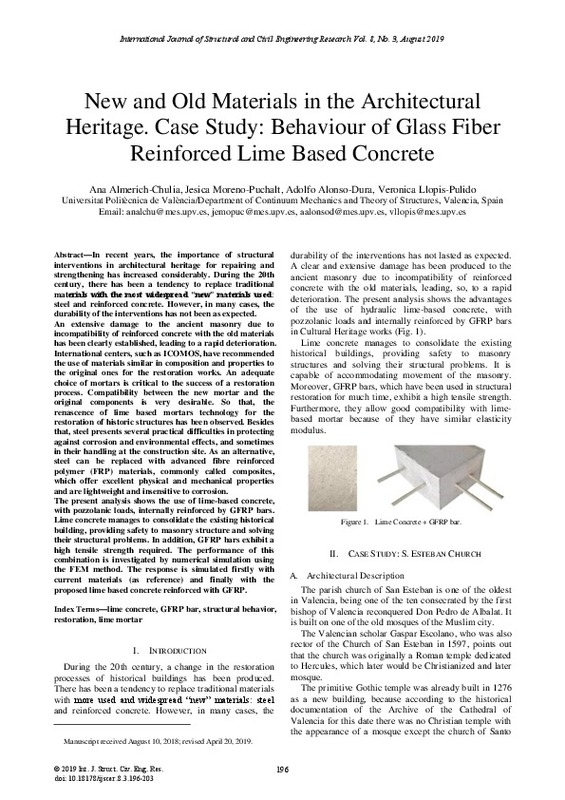JavaScript is disabled for your browser. Some features of this site may not work without it.
Buscar en RiuNet
Listar
Mi cuenta
Estadísticas
Ayuda RiuNet
Admin. UPV
New and Old Materials in the Architectural Heritage. Case Study: Behaviour of Glass Fiber Reinforced Lime Based Concrete
Mostrar el registro completo del ítem
Almerich-Chulia, A.; Moreno-Puchalt, J.; Alonso Durá, A.; Llopis-Pulido, V. (2019). New and Old Materials in the Architectural Heritage. Case Study: Behaviour of Glass Fiber Reinforced Lime Based Concrete. International Journal of Structural and Civil Engineering Research. 8(3):196-203. https://doi.org/10.18178/ijscer.8.3.196-203
Por favor, use este identificador para citar o enlazar este ítem: http://hdl.handle.net/10251/164160
Ficheros en el ítem
Metadatos del ítem
| Título: | New and Old Materials in the Architectural Heritage. Case Study: Behaviour of Glass Fiber Reinforced Lime Based Concrete | |
| Autor: | ||
| Entidad UPV: |
|
|
| Fecha difusión: |
|
|
| Resumen: |
[EN] In recent years, the importance of structural interventions in architectural heritage for repairing and strengthening has increased considerably. During the 20th century, there has been a tendency to replace traditional ...[+]
|
|
| Palabras clave: |
|
|
| Derechos de uso: | Reserva de todos los derechos | |
| Fuente: |
|
|
| DOI: |
|
|
| Editorial: |
|
|
| Versión del editor: | https://doi.org/10.18178/ijscer.8.3.196-203 | |
| Tipo: |
|









